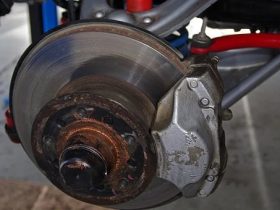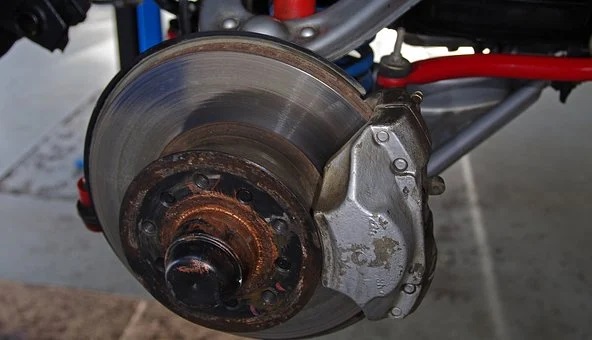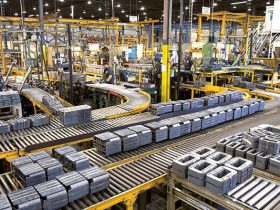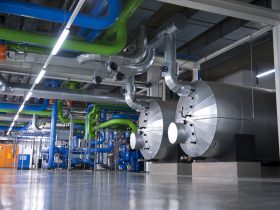If you drive the latest car model and make, it could have disc brakes in place of drum brakes. This is because industrial disc brakes are mostly used in modern cars. Disc brakes provide better performance in numerous ways. However, you will only experience these benefits if you know how a disc brake works and how to maintain them. That’s why we’ve shared this guide to help you get familiar with your industrial disc brakes and know how to take good care of them.
Disk brake defines
As its name suggests, disc brakes are the type of brake that utilizes a disc for the frictional surface. That’s the surface that is contacted by the pads when you apply the brakes. In most cases, the disc brake system is contrasted with a drum brake, a system that utilized drums instead of discs.
Industrial disc brakes have become the standard systems of brakes nowadays, with almost every vehicle model and making having them. Many disc benefits make these kinds of brakes famous.
These brake systems are not used in vehicles only. You’ll find them in both non-motorized and motorized bikes. The disc brakes found in vehicles and those in bikes are almost the same with a slight difference in design. Let’s look at how disc brakes works, the mechanism they utilize to stop a moving car.
The working principle of industrial disc brakes
Industrial disc brakes are hydraulic. A disc brake comes with various components that work together to transmit and amplify the force of your foot on the brake. Here is how it happens.
Once you put your foot on the brake pedal, the pushrod pushes and applies pressure to the cylinder piston. This makes brake fluid move out of the master cylinder to the brake tube that is transferred to the brake caliper.
These tubes are linked to the pistons in the caliper. Therefore, they ferry the fluid pressure from the master cylinder to the piston. These pistons slide from their bores due to the fluid pressure. This motion pushes the brake pads towards the rotor (the disc that rotates with the wheels).
Based on the amount of force applied to the brake pedal and the duration, the pads will contact the rotor to lessen its speed or stop it from moving. Releasing the brake pedal invites a return mechanism for the components involved. The brake fluid returns to the cylinder waiting for another action.
Types of industrial disc brakes
Industrial disc brakes are available in two types: floating and opposed piston. These terms are derived from the kind of brake caliper utilized. The floating brakes use calipers with a piston on a single side while opposed piston disc brakes use calipers with pistons on the two sides of the rotor.
Floating disc brakes
The floating disc brakes come with calipers with pistons on one side. Pistons can be either one or two. The work of a piston is pushing the brake pad to squeeze in the inner part of the rotor. This makes the floating caliper move on the slid pin, pushing the brake pad on the other side of the caliper.
These types of industrial disc brakes are common in passage vehicles where higher braking force isn’t needed. Additionally, where lightweight calipers are needed. Floating disc brakes are cheap than the opposed-piston brake discs since they cost less to produce
Opposed piston disc brakes
Because of the pressure of the pistons on the two sides, the opposed-piston disc brakes offer a braking mechanism that is stable. They give the driver improved control of the braking unit. Since the frictional surface that is contacted by the loads is huge, these brake disks form a high car stoppage force. For this reason, they are ideal in heavy-duty applications.
Note that the number of pistons in an opposed-piston disc brake can be increased to match the braking force needed. That’s why most high-performance cars come with these brakes that have up to 6 pistons.
Advantages of industrial disc brakes
Here are some of the benefits of industrial disc brakes.
- Less effort is required to stop a speeding car. Unlike drum brakes, industrial disc brakes don’t require excessive force. That’s because of the construction and design of the disc brake system.
- Fast cooling. The purpose of a brake is to transform the kinetic energy of a speeding car into heat energy that dissipates into the air. Therefore, a lot of heat is generated. Disc brakes disperse the heat better because of their design.
- Less heat produced. When industrial disc brakes are exposed to similar braking power and condition, they generate less heat than drum brakes.
- Improved performance in wet conditions. Disc brakes eliminate water efficiently, particularly if the rotor is the drilled or slotted type. This allows them to maintain the braking force even in wet conditions without skidding which common with drum brakes.
- Pad wear displays. Industrial disc brakes come with a pad wear display, something you can’t find in drum brakes.
- Simple to maintain. Industrial disc brakes are easily available and easy to maintain. In many cars, you can check the state of the frictional surface without removing the wheel.
Downsides of industrial disc brakes
- Industrial disc brakes are more costly than drum brakes
- They are complicated. They come with many components and this makes them complex units. In case they fail, they will cost more to troubleshoot and fix.
Generally, industrial disc brakes provide higher performance levels. That’s why they are the most preferred brakes. Currently, there are conversation kits for those car owners who might want to transition from drum brakes to industrial disc brakes. Irrespective of the higher costs, the disc brakes offer a dependable braking mechanism for driving safety.












